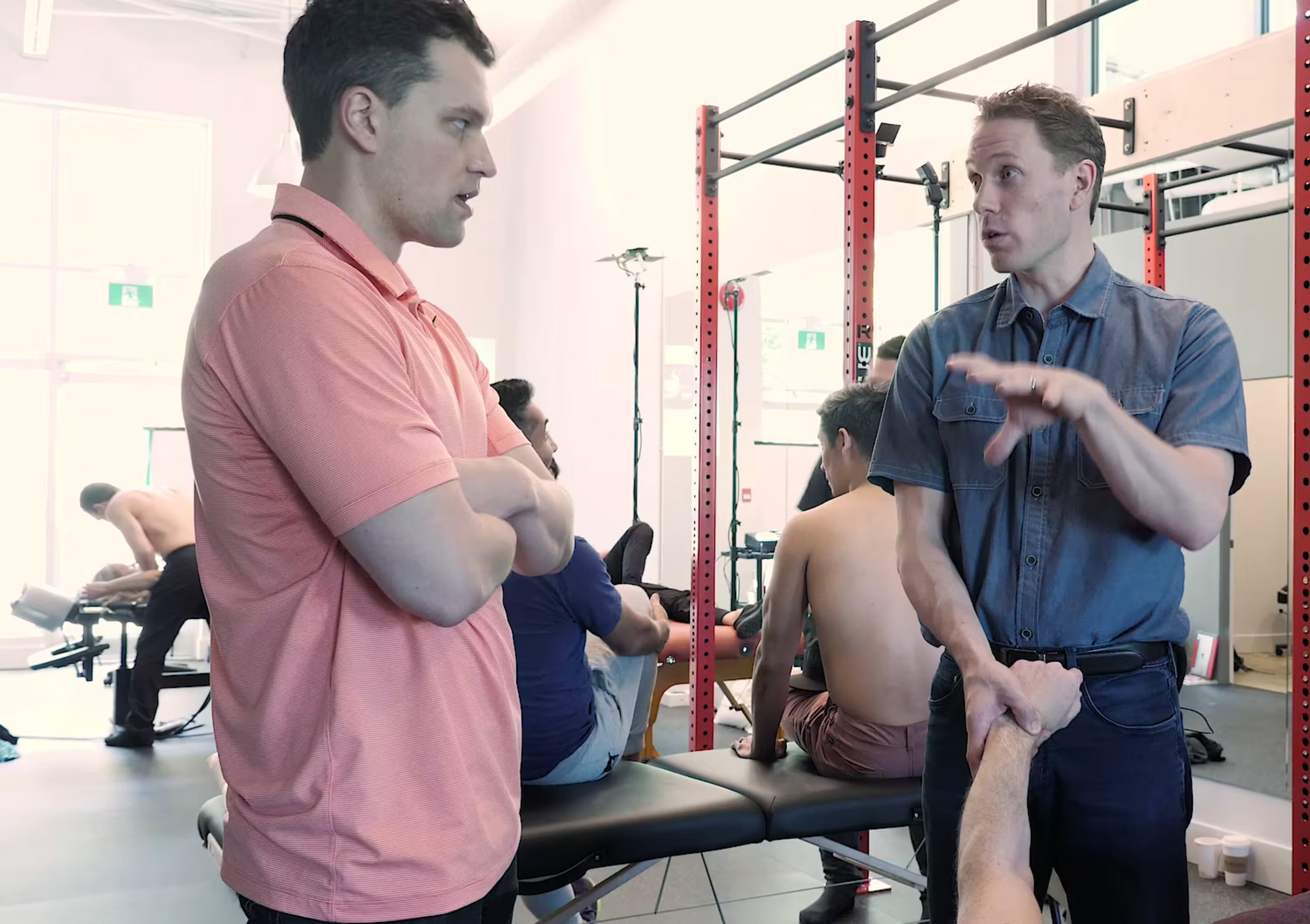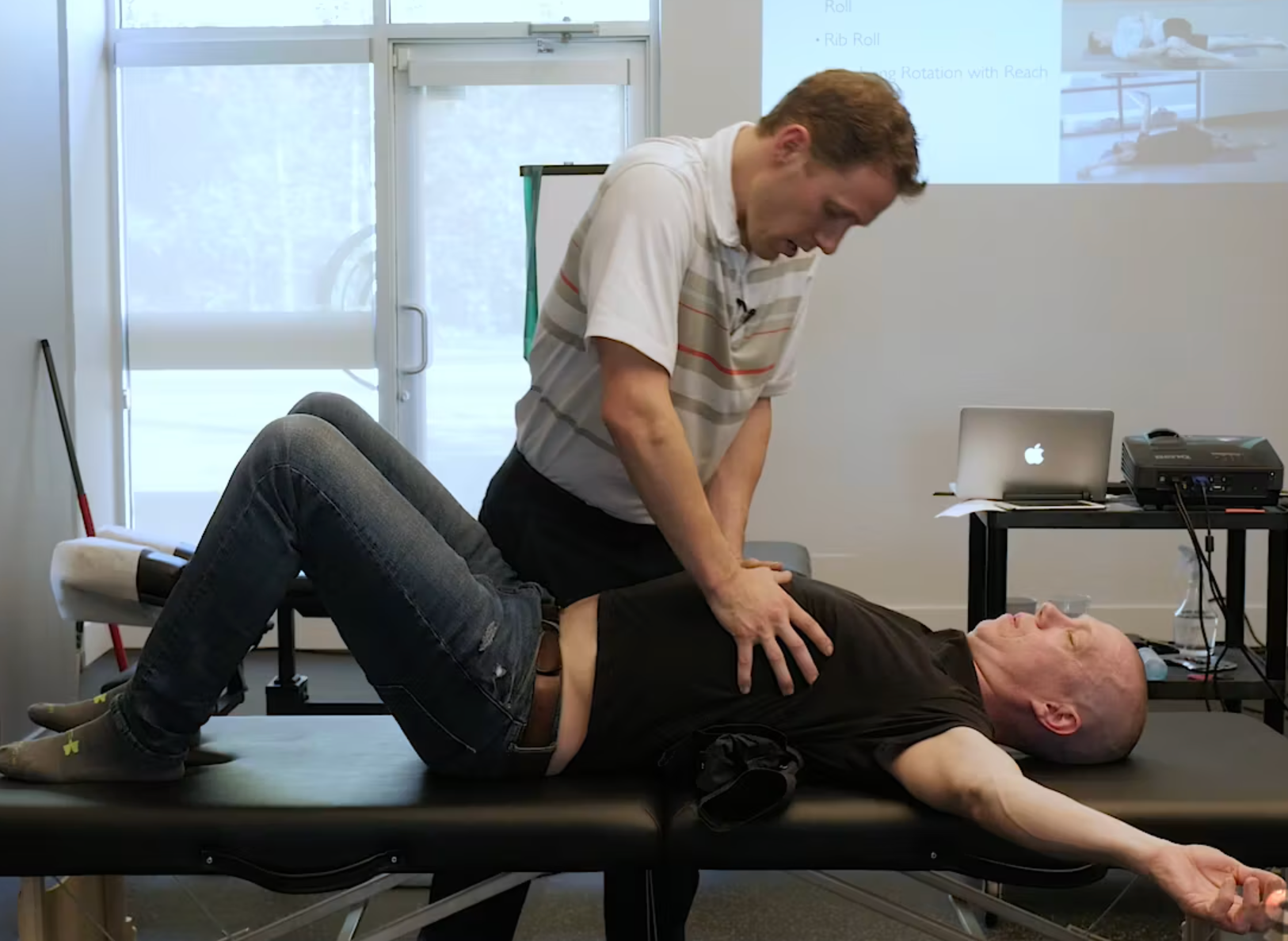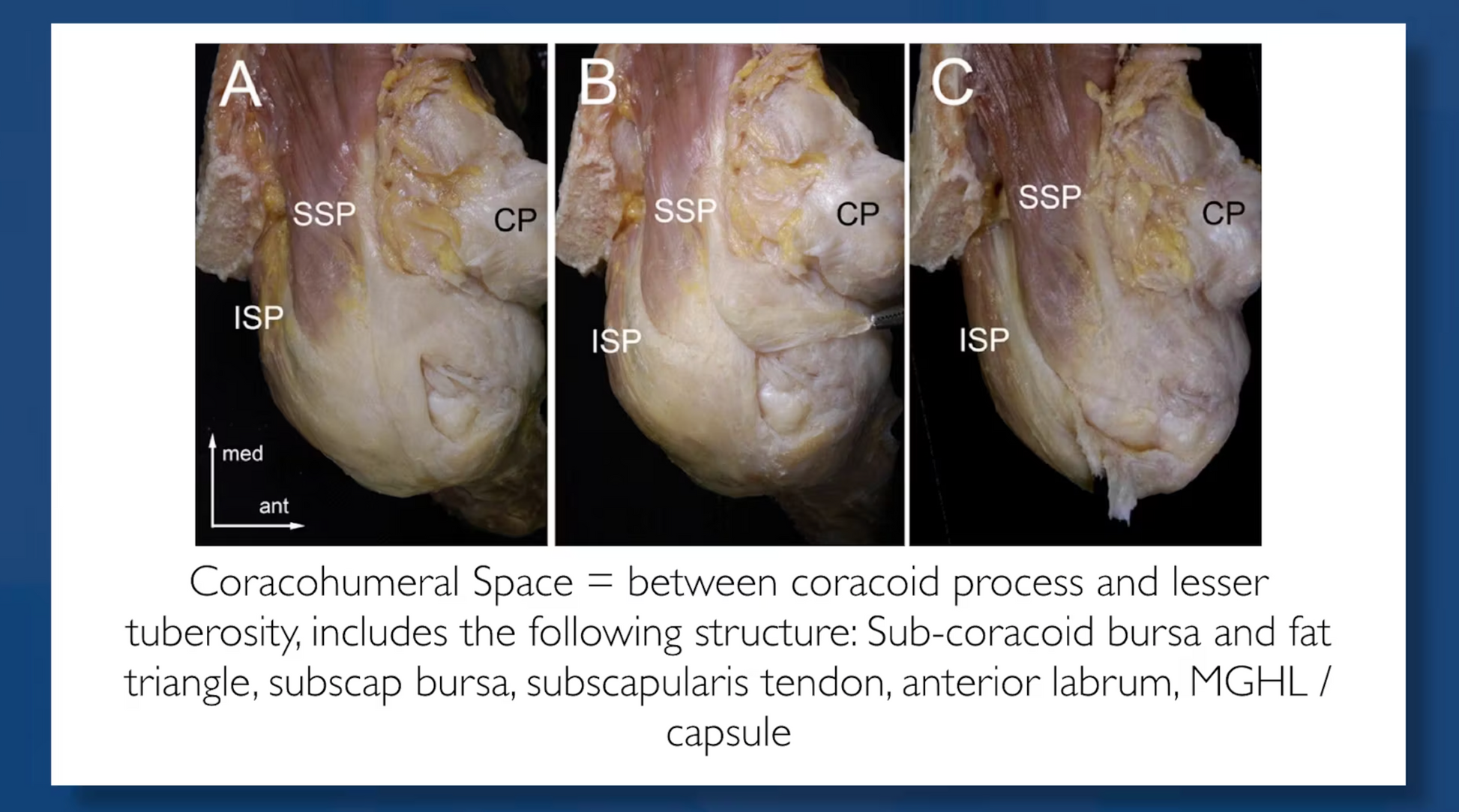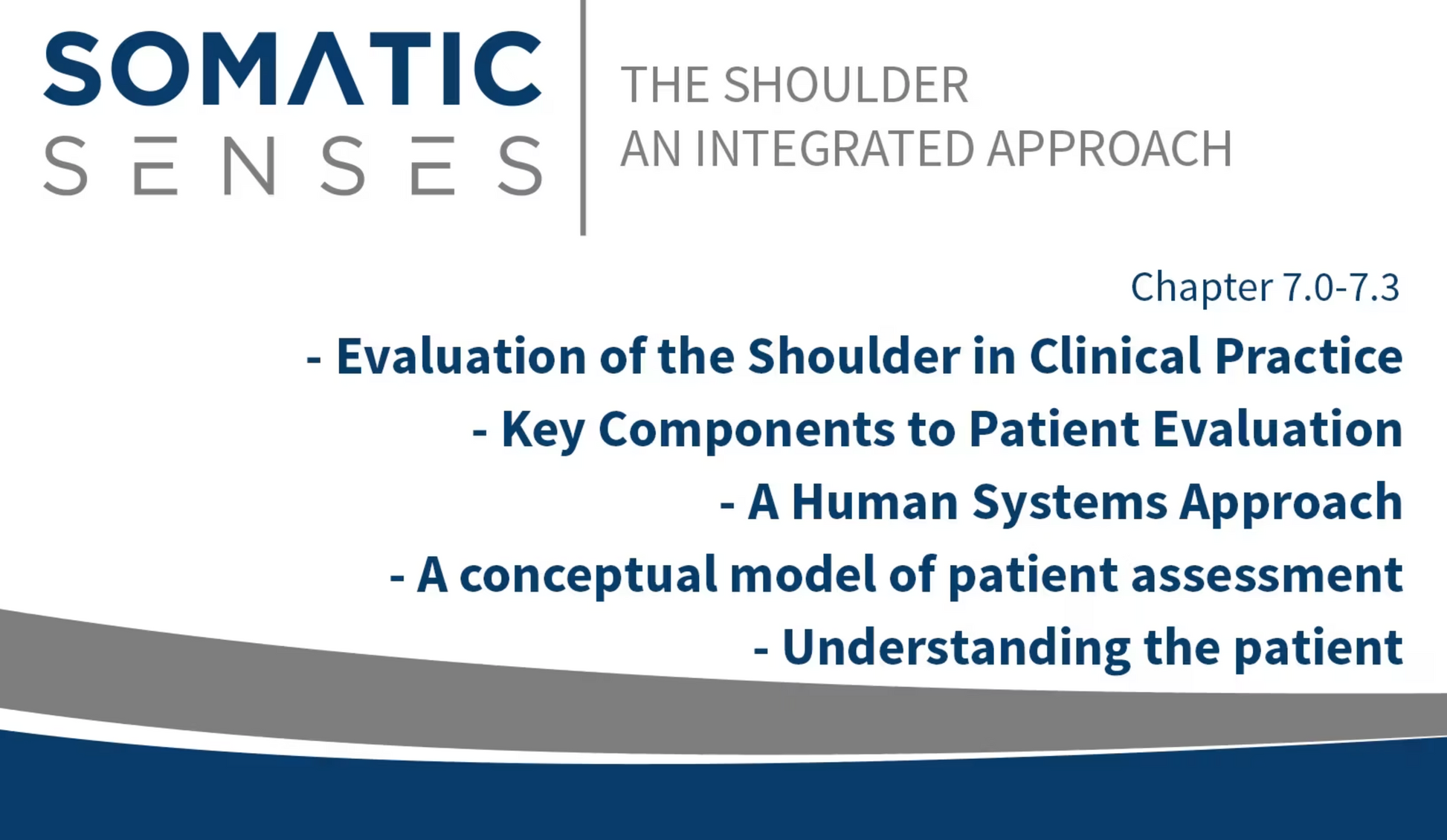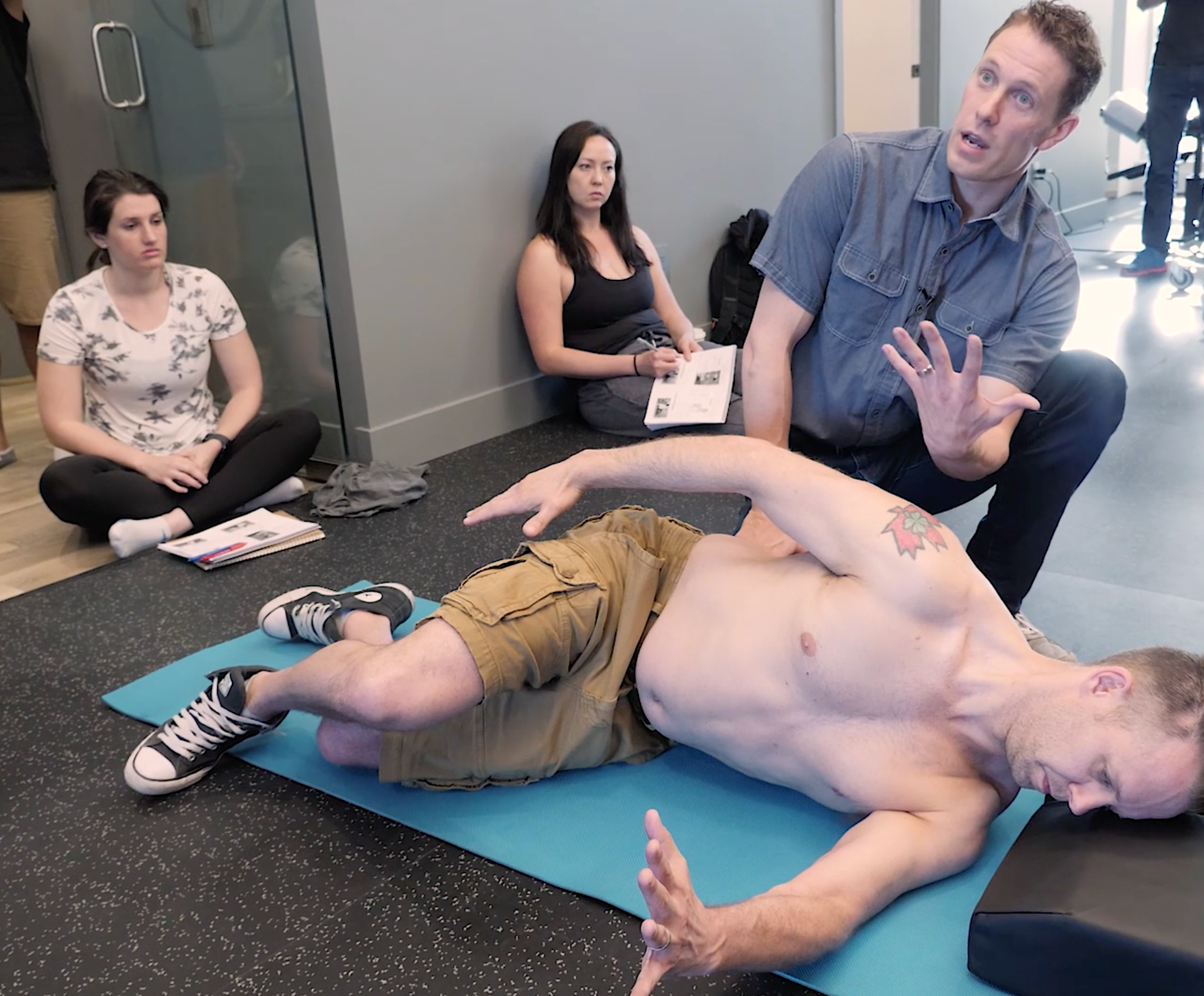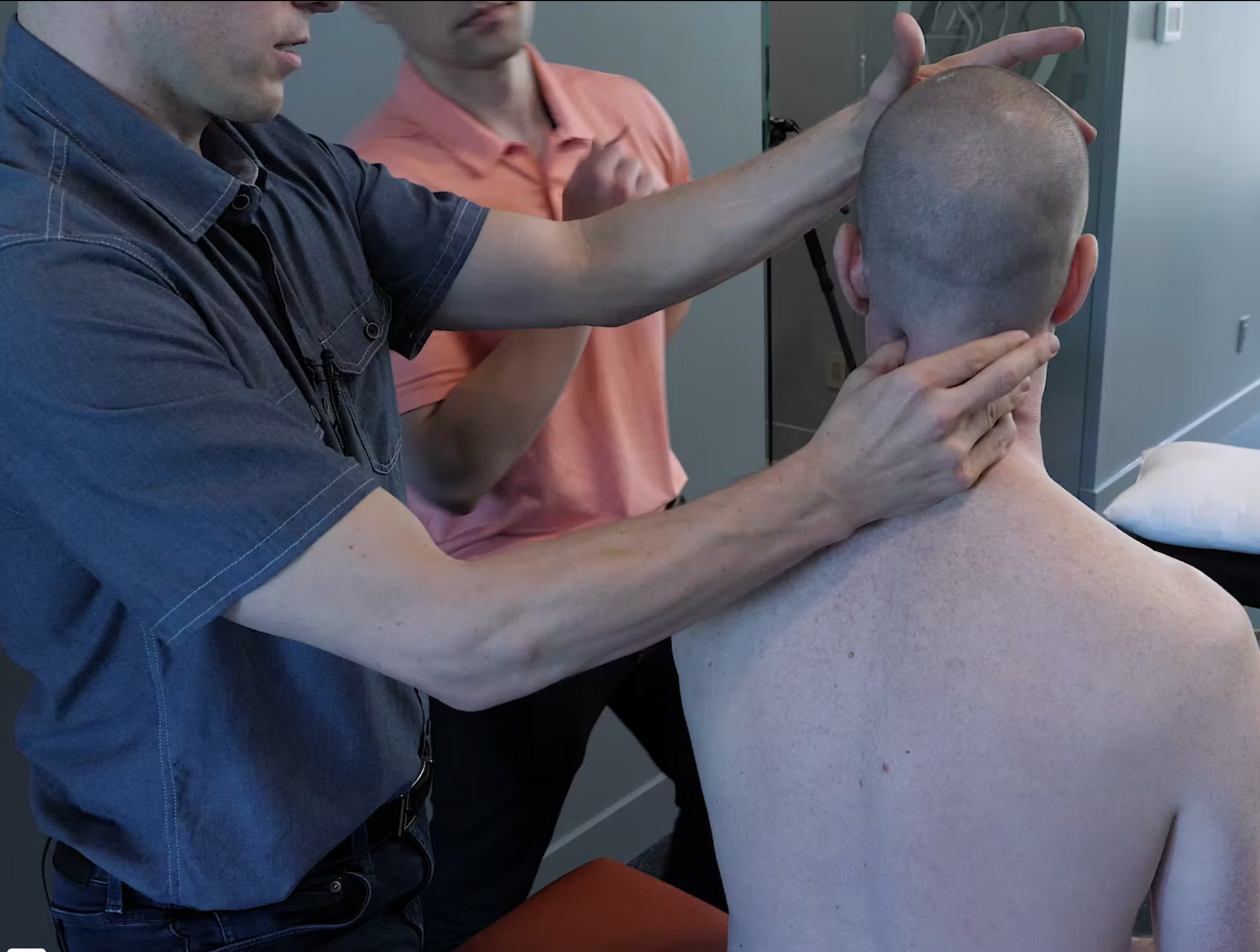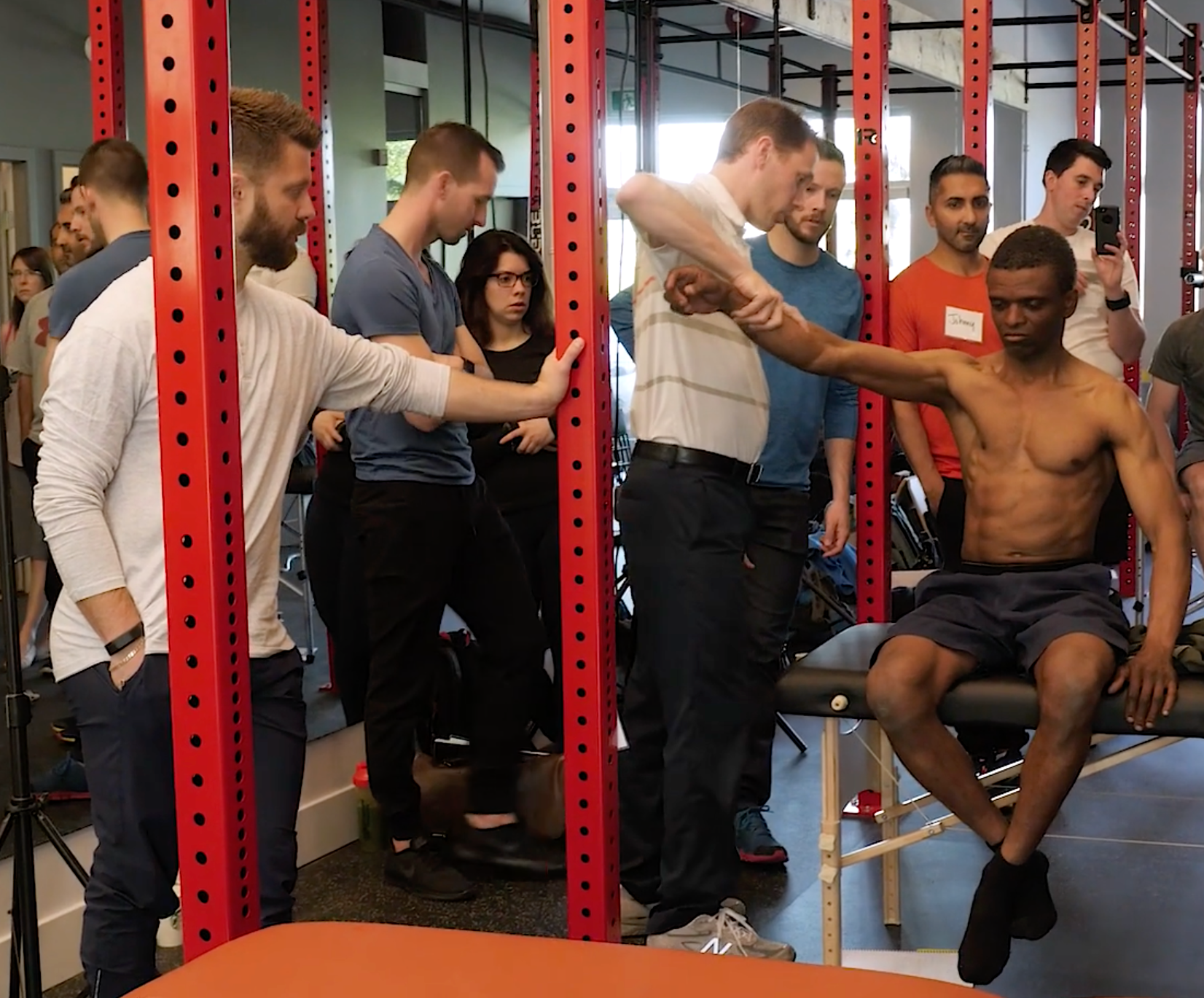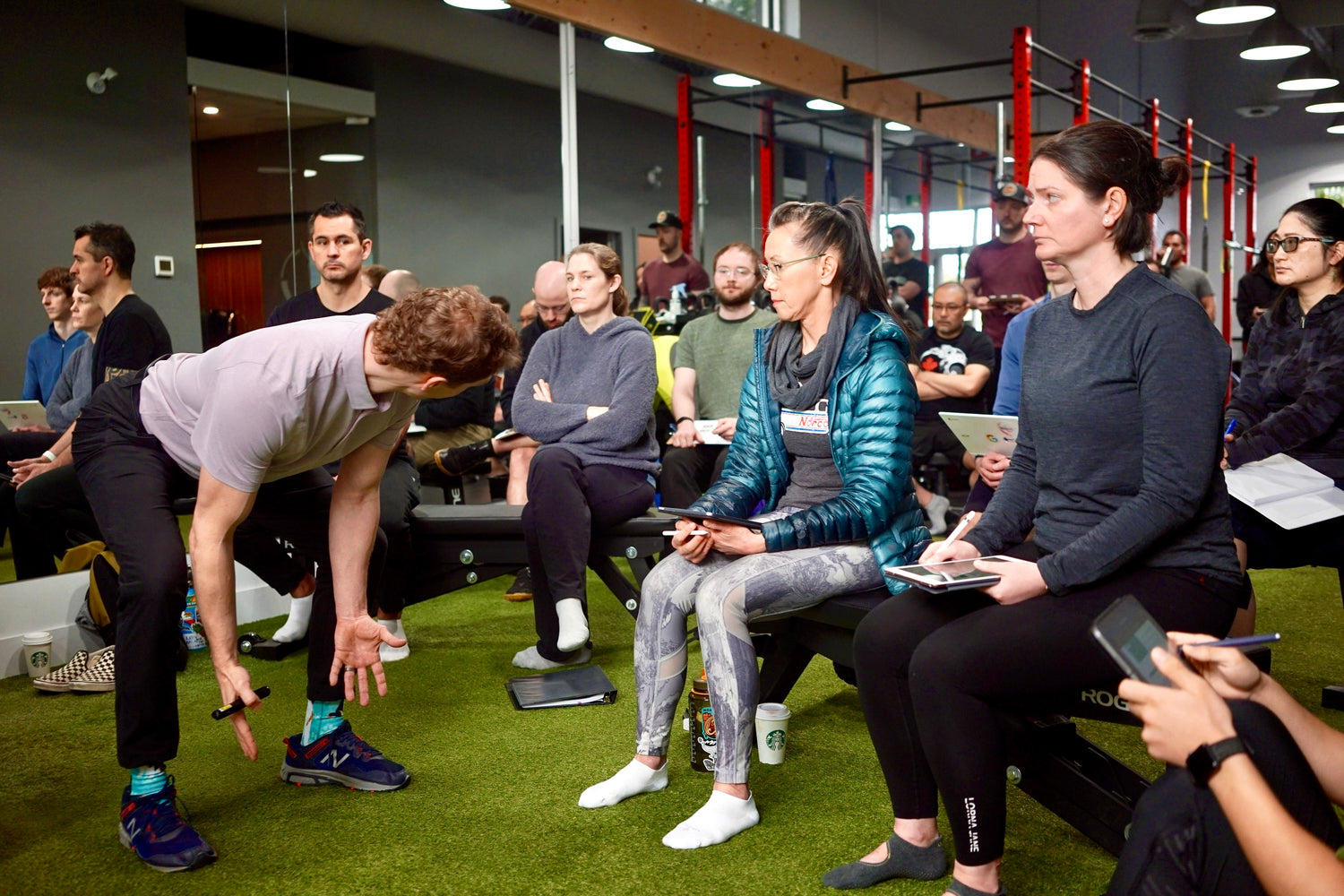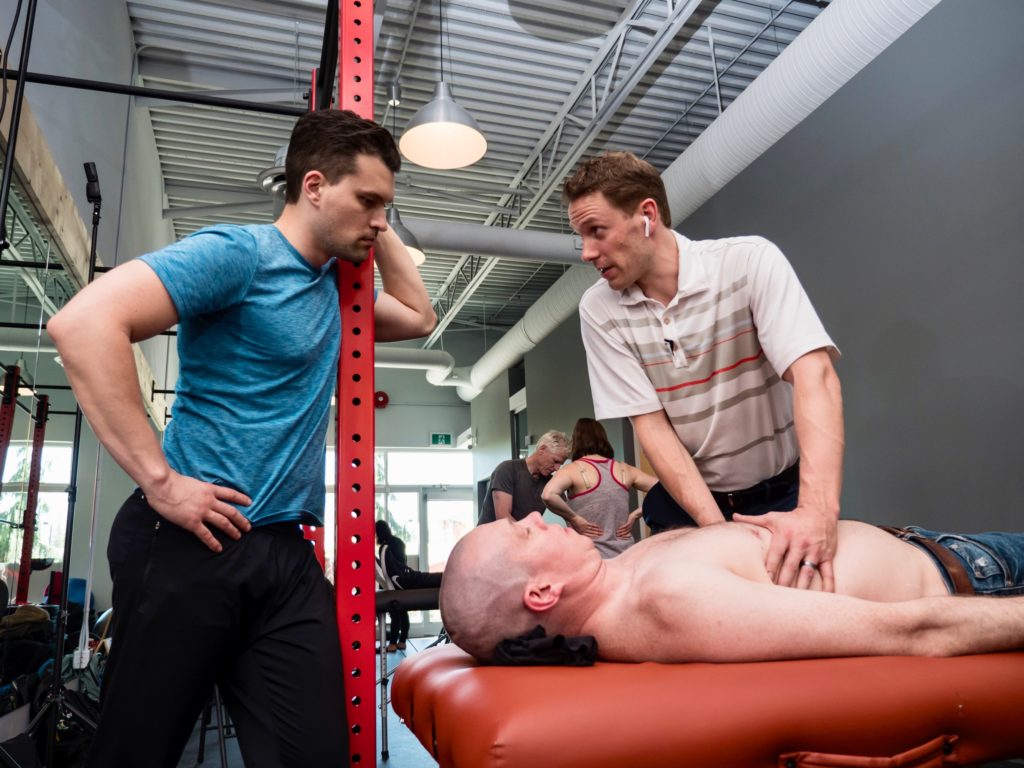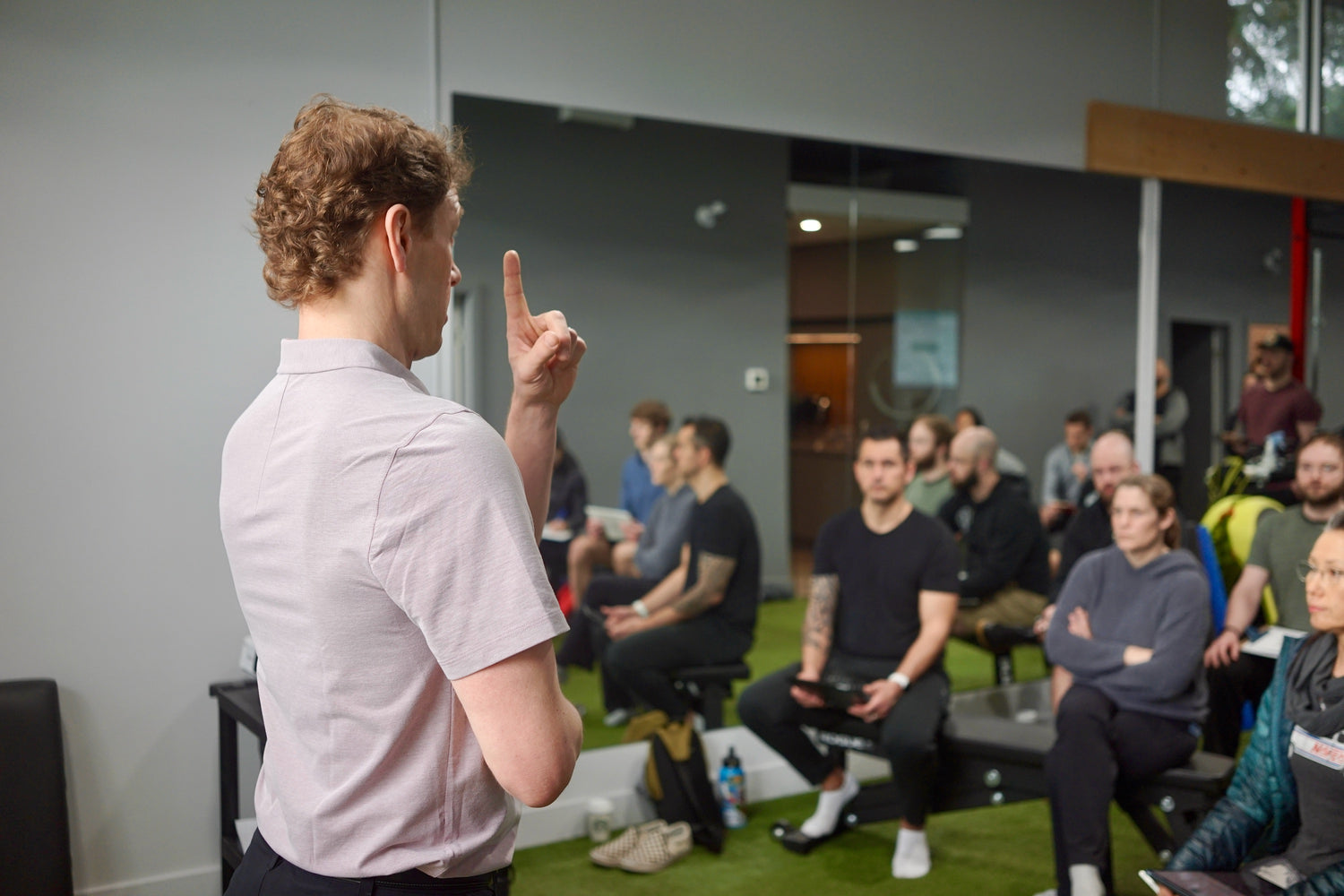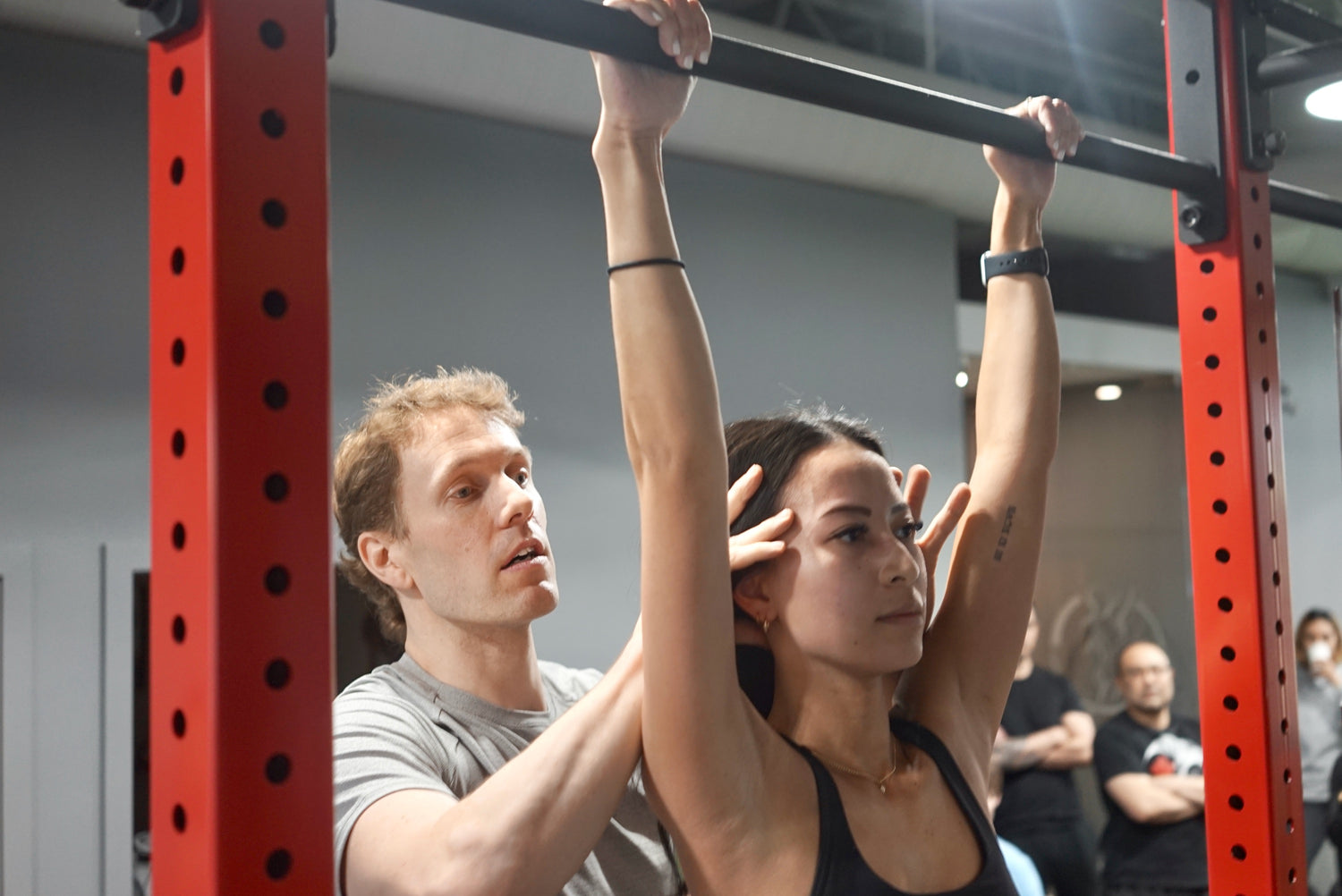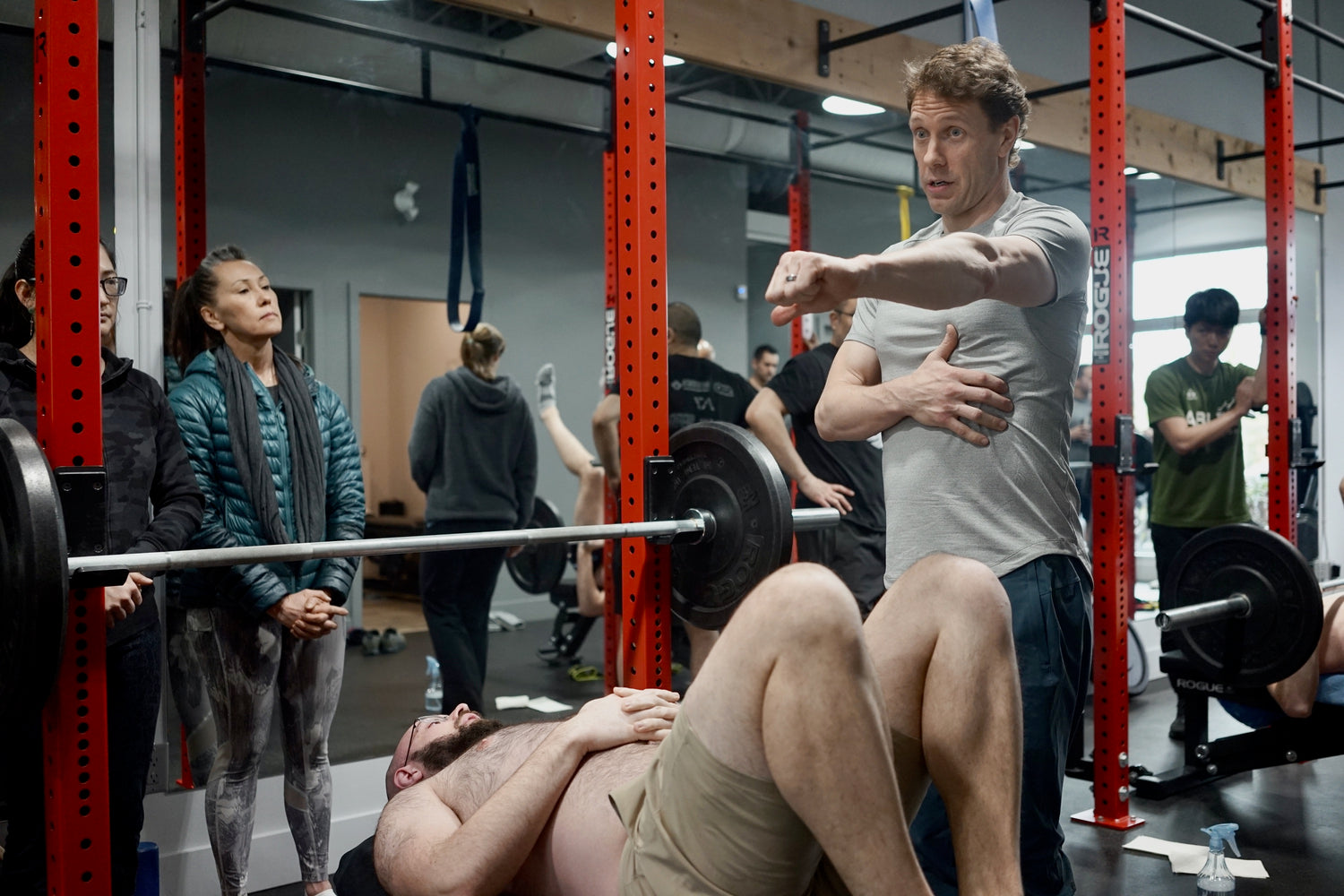Description
What You Will Learn
What You Will Learn:
- The current literature pertaining to the anatomy & function of the shoulder girdle
- Pathologies, Injury Mechanisms, and Pathomechanisms
- Evaluation & Management of the Shoulder in Clinical Practice
- The rehab continuum - the fundamentals of rehabilitation and the application to the evaluation and management of the shoulder
- Optimal Loading Strategies for the irritable, non-irritable, and degenerative patient presentations
- Clinical Reasoning - diagnosis-based clinical decision making in a movement-based model of rehabilitation
- How to best integrate manual therapy and rehabilitation into clinical practice to improve patient outcomes and restore function
- How to differentiate between treating functional and structural pathology, and how to formulate a management strategy for both
- The Developmental Model: Mobility, Stability and Movement Pattern Retraining
- Principles of a Movement-Based Practitioner
Course Outline
Welcome!
- Welcome to 'The Shoulder' Online Course
- How to take this course
Chapter 1: Introduction.
- Course Notes : Chapters 1-6
- Introduction
- Integrating Systems & Why the Shoulder
- Test your learning
Chapter 2: Anatomy & Function of the Shoulder Complex.
- Anatomy & Function
- Test your learning
Chapter 3: Shoulder Complex Kinematics.
- Shoulder Complex Kinematics
- Test your learning
Chapter 4-5: Pathologies, Injury Mechanisms and Pathomechanics
- Primary Impingement
- Secondary Impingement & Rotator Cuff Related Shoulder Pain
- Sub-Coracoid Impingement
- Internal Impingement: Posterior Superior Glenoid Impingement
- Four Categories of Biceps Tendon Pathology & Pulley Lesions
- Internal Impingement: Anterior Superior Glenoid Impingement & The Story of a Misdiagnosis
- Instability
- Challenges in Diagnosis
- Test Your Learning
Chapter 6: Putting it all together.
- Putting it all together
- Test your learning
Chapter 7: Evaluation of the Shoulder in Clinical Practice.
- Course Notes : Chapter 7
- Evaluation of the Shoulder in Clinical Practice
- Pain Mapping of Common Shoulder Diagnoses
- Systems to Assess / Systems to Address
- Imaging of the Shoulder Clinical Practice
- Test your learning
Chapter 8-12: Management of the Shoulder in Clinical Practice.
- Course Notes : Chapter 8-14
- Management of the Shoulder in Clinical Practice
- Clinical Presentation: Irritable
- Clinical Presentation: Non-Irritable + Functional Competence, Movement & Motor Control
- Test your learning
Chapter 13: Moving Differently in Pain.
- Moving Differently in Pain
- Test your learning
Chapter 14: Clinical Presentation: Degenerative & Principles of a Movement-Based Practitioner.
- Clinical Presentation: Degenerative & Principles of a Movement-Based Practitioner
- Test your learning
Chapter 15: Therapist Directed Mobility, Stability & Motor Control.
- Course Notes : Chapter 15
- Therapist Directed Mobility, Stability & Motor Control
- Test your learning
Chapter 16: Evaluation of the Shoulder (Lab).
- Top Tier Assessment (SFMA+)
- Range of Motion
- Scapulohumeral Rhythm, Stability & Motor Control
- Passive ROM
- Supine Internal Rotation - Technique Tips
- Internal Rotation Assessment - Lab Q&A - Patterns of Mobility in a Participant with GHJ instability
- Thorax Rotation Assessment
- Stability & Motor Control Assessment
- Shoulder Symptom Modification & Manual Muscle Testing
- Assessment of Push and Pull Patterns
- Test your learning
Chapter 17: Exercise Rehabilitation (Lab).
- Course Notes : Exercise Lab
- Range of Motion Training
- Sleeper & Horizontal Adduction Stretch
- Mobilization of the Thorax
- Breathing, Relaxation and Supine Sagittal Stabilization
- Exercise Lab Q&A - Breathing Pattern Dysfunction & Excessive Tension (Example 'Patient')
- Exercise Lab Q&A - Breathing Pattern Dysfunction & Excessive Tension (Discussion)
- Baby Breathing & Low Kneeling
- Low Kneeling Technique Tips
- Exercise Lab - 5 Month Side Support
- Technique Tip - 5 Month Side Lying
- Low Kneeling Modifications
- Quadruped & Tripod
- Hand Support and Scapular Centration
- Quadruped Demonstration
- Exercise Lab - Coaching The Quadruped
- Coaching The Quadruped - Technique Tips (Example 'Patient')
- Coaching the Quadruped - Hourglass & Lumbar Flexion
- Exercise Lab - Coaching The Tripod With Reach and Rotation
- Exercise Lab - Coaching the Tripod with Reach & Rotation - Technique Tips
- Exercise Lab - Modified Tripod with Reach, Rotation and Pull - Demonstration
- Exercise Lab - Modified Bear
- Closing Notes on Exercise Lab - Pushes, Deadlifts as a Pull, Field Goals
- Test your learning
Chapter 18: Therapist Directed Mobility, Stability & Motor Control (Lab).
- Sleeper Stretch
- Sleeper Stretch Technique Tips
- Manual Therapy Lab Q&A -Sleeper Stretch, Setup in an Unstable Shoulder
- Horizontal Adduction & Extension-Adduction-Internal Rotation
- Reverse Sleeper & External Rotation Mobilization
- Discussion: Hypertonicity Limiting Function / Protective Pattern
- Technique Tips - Maintaining Centration - Mobilization with External Rotation
- GHJ Mobilization con Movement & End Range Mobilization
- Lab Q&A: GHJ Mobilization con Movement & End Range Mobilization
- Upper Trapezius, Cervical ROM Assessment & Functional Palpation
- Technique Tips - Functional Palpation and Vector of Tension
- Technique Tips - Functional Palpation and Vector of Tension
- Technique Tips - Functional Palpation and Vector of Tension
- Levator Scapulae
- Lab Q&A - Levator Scapulae
- Rhomboid
- Lab Q&A - Rhomboid
- Lab Q&A - Rhomboid
- Anterior Thorax & PecLab Q&A - Rotation Dysfunction of Thorax
- Lab Q&A - Anterior Rib Flare and Extension/Uprighting Restriction
- Distal Pec Major
- Lab Q&A - Palpation of Distal Pec Major
- Manual Therapy Lab Q&A - Palpation of Distal Pec Major
- Manual Therapy Lab Q&A – Why are we so specific in position & movement?
- Serratus Anterior, Subclavius & Pectoralis Minor
- Lab Q&A - Serratus Anterior
- Lab Q&A - Serratus Anterior
- Upper Serratus Anterior & Clavicular Division of Pec Major
- Technique Tips: Upper Serratus Anterior
- Subscapularis
- Lab Q&A: Subscapularis
- Lab Q&A: Subscapularis
- Lab Q&A: Subscapularis
- Latissimus Dorsi
- Quadruped Rockback
- Teres Major, Teres Minor, Infraspinatous
- Lab Q&A: Teres Major/MinorLab Q&A: Infraspinatous
- Manual Therapy Contacts
- Lab Q&A: Manual Therapy Contacts
- Long Head Triceps
- DeltoidSub-Occipitals & Upper Cervical Mobilization
- Test your learning
Next Steps.
- Recommendations for Future Learning
Course Instructor
Michael Maxwell, DC, BHK
Michael's mission is to provide MSK education that is backed by research, rooted in reason, and highly applicable,
Michael is a Certified Instructor for Dynamic Neuromuscular Stabilization according to Pavel Kolar, and is Canada's only Certified Instructor for Michael Shacklock's Clinical Neurodynamics. Michael has presented at post graduate continuing education courses and conferences throughout North America and Internationally.
Michael started his career as a Personal Trainer in 1998, and followed by acquiring certifications and experience as a Medical Exercise Specialist, Certified Strength and Conditioning Specialist, and Kinesiologist. Since 2007 he has practiced as a Chiropractor with an emphasis on integrating movement-based manual therapy and exercise interventions.
Michael has pursued education and excellence with a passion since his early days as a Personal Trainer. In 2003, Dr. Maxwell has organized well over 300 continuing education courses throughout Canada featuring industry leaders such as Lorimer Moseley, Donald Murphy, Jack Miller with Mulligan, Jeremy Lewis, Stuart McGill, Pavel Kolar, and the outstanding Prague School Physio’s, Clayton Skaggs, Brett Winchester, Michael Shacklock, Dale Buchberger, Clare Frank, Robert Lardner, Mark Finch, Charlie Weingroff, and many more!
Through his consistent and exceptional exposure to some of the world's most recognized clinicians and educators, 20 years in the trenches helping clients and patients reach their goals, and his dedication to providing exceptional and comprehensive care in clinical practice, Dr. Maxwell is well-positioned to provide outstanding clinical continuing education.

